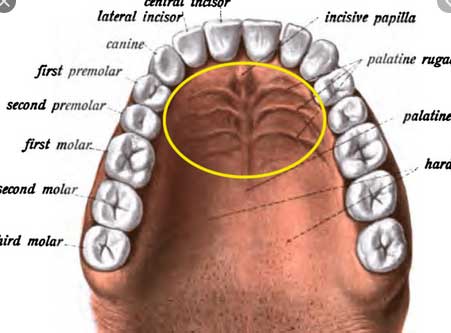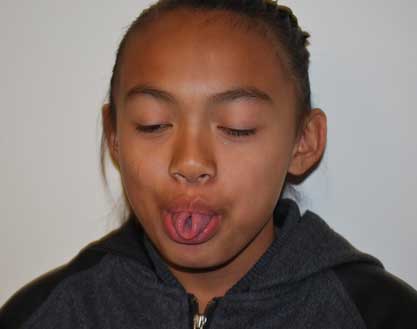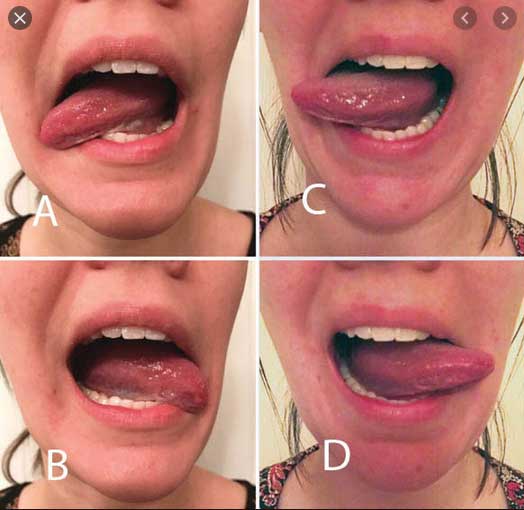Myofunctional Therapy (AKA: Physical Therapy of the Tongue)
What is Myofunctional Therapy?
Myofunctional Therapy is a combination of specific physical therapy exercises which address improving the bite, swallowing, breathing and potential airway obstruction and sleep disorders. This therapy targets the face, the neck and the soft tissues of the mouth to reposition and strengthen the tongue as well as optimize oral rest posture (also known as the sweet spot). If you or your child are dealing with issues associated with abnormal bite, swallowing, chewing, mouth breathing or disrupted sleep, it is worth exploring Myofunctional Therapy as a viable option to improve and potentially correct these conditions.
The four goals of Myofunctional Therapy are:
- Nasal Breathing- all day and all night
- Lip Seal- all day and all night
- Correct Tongue Posture- all day and all night
- Correct Swallowing Pattern- all day and all night
Keep in mind that we can’t do any of these things while eating, drinking, speaking, yawning, or brushing and flossing our teeth – these goals apply to the times throughout the day and night that your mouth is at rest. So, what symptoms would make one a candidate for Myofunctional Therapy? We look for things such as:
- Mouth breathing
- Open Mouth Posture
- Low tongue posture
- Tongue thrust swallowing
- TMJ
- Recurrent headaches
- Obstructive sleep apnea
Research shows that with a myofunctional therapy program, obstructive sleep apnea can be reduced by as much as 50 % in adults and 63% in children.
It is so important to catch this dysfunction early while a child is developing, as this can help prevent a significant orthodontic problem. If the tongue does not consistently sit in the sweet spot of the mouth, it can cause narrow arches, causing the tongue to have no room to rest against the roof of the mouth. As a result, mouth breathing ensues because the tongue needs to sit on the floor of the mouth. It is impossible to breathe through your mouth if your tongue is in the sweet spot.
What the tongue does when positioned in the sweet spot is push against the roof of the mouth, causing it to expand. When the maxilla (the upper jaw and teeth) expands, the nasal bone drops down into the proper position. Conversely, if the maxilla does not get to expand the nasal bone gets pushed up towards the nose, and since there is nowhere for this bone to go it has to deviate and bend in order not to break. This is what we call a deviated septum. With a severe deviated septum, one has trouble breathing through their nose and are forced to breathe through the mouth.
The Sweet Spot

So the tongue has a big role to play, in aligning the structures of the nose and mouth to breathe properly. We must also recognize what can happen if the tongue is tied. Tongue tied means that the bottom of the tongue has a ligament extending to the floor of the mouth and prevents the tongue being able to reach the roof of the mouth. Sometimes, when the tongue is tied to the floor of the mouth the floor of the mouth raises, and that can actually cause significant tension to the neck and shoulders, as well as to the teeth resulting in teeth and jaw misalignment.


It is never too late for this therapy, even in adults, as the research shows that we can improve sleep apnea significantly with Myofunctional Therapy. Even if a person is on a CPAP or an oral appliance, it can reduce the pressure of the CPAP or the amount of the adjustment needed on an appliance to get the best result. So, what is the process for myofunctional therapy?

The research shows that the best treatment protocols are 8-12 sessions every other week for about 30 minutes with a myofunctional therapist. (My office has 3 trained therapists plus myself.) The patient is required to do approximately 3-4 exercises are every day for about 5-10 minutes. Different exercises will be introduced as the person shows more efficiency, and with this the progression of the exercises typically gets a little more challenging. These exercises work to strengthen the tongue, to stretch the tongue, to help with swallowing and to also relieve facial tension.
If a tongue tie release is needed (not all tongue issues end up with tongue tie releases), we will usually do them after the third of fourth visit. The initial sessions help to condition the tongue (sort of like working out) and send good blood circulation into the area for healing. After the procedure, if we determine that it is necessary, our patients continue with 4-8 sessions after to keep the tongue in shape, stretching the surgical site and to prevent the surgical site from scarring down.
If you or your child have a tongue-tied condition, or if you experience any of the symptoms mentioned above, contact our office for a consultation. We can help you determine if a frenulectomy (tongue tie release) plus Myofunctional Therapy or Myofunctional Therapy alone may be right for you.


